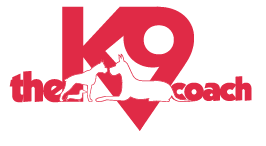Leadership Training For Dogs
Let me tell you a story about Finlay. His situation is a very good example of how I use structure and leadership to address the behavior. It isn't just about the obedience command itself.
It's all about leadership that creates the change. And claiming that role from your dog.
Obedience Training Must Lead To Leadership From You.
Difference Between Trick Training & Obedience Leadership Training For Dogs
I received a call for a very handsome guy and scheduled time to go work with the family. Before that appointment could get scheduled another "incident" happened where he chased down an elderly neighbor. He's nipped people more than once and lunged at dogs and people on their walks.
The family was just about ready to say there was no hope. They felt, how could more training help -- they have done training -- multiple times.
You see this family as been to at least 3 other training programs. Starting with Puppy Training, and 2 group classes. "Graduating" from each. Cute certificates, photos, and all.
When I arrived today and was pretty easy to assess what was going on.
The training was not much more than some tricks they called Sit, Down, Paw, and Go to Mat. These skills were only reliable if there were treats involved and inside the house with no distractions. There was no solid foundation for obedience — no duration and no distraction proofing.
I actually felt really bad for family at how much they had spent on dog training. They’ve tried to do the right things right and other trainers missed the mark on teaching these folks how to be good leaders and get results.
It was also clear to see the dog was in charge of how things went. He leads the walks, he dictates how visitors are treated, and he sets the tone and the pace of the household.
There was no use of obedience skills, boundaries or house rules with clear expectations to control arousal, manage greetings, manage the arrival of visitors in the house, or even to earn meals and exits to the outside world. And absolutely no recall without shaking a treat pouch.
We tried a feeding protocol and a very demanding, over-adrenalized dog showed up. Barking, dancing, and spring-loaded waiting on his release. The same thing happened at the door -- he did the command but was not in a calm state of mind.
As we started working to turn those tricks into skills that are well-proofed, with built-in duration, and aiming for first-time accuracy of the skills without food, and use them in everyday life -- a bully showed up. Stubborn. Resistant. Frustrated.
He didn’t like the change. He didn’t like being relieved of his leadership role.
The family quickly saw they were not leaders to this dog. He didn't like when the rules changed, you could see it in his body language. You could see he was waiting for them to give up. He offered his paw, he tried to move away, he barked – he was trying to negotiate his way out of doing what they asked. A simple sit. A simple down.
So week one was about shaking things up for Finlay. I won't call it conflict-free, because he will see it as a conflict. But there is no "punishment", only consequences of having the human wait him out, walk away from feeding him, not actually going outside, and putting him back on the place board every single time.
Of course, there is teaching, praise, and reward for job well done when it happens. But we have to be ok with him challenging our new leadership approach and proving to him we have skills and will hold him accountable.
This week they will be working to have him:
• waiting for his food without barking, without jumping up, without demanding it in any way.
• Waiting for the door patiently – and not being able to anticipate if we’re actually going outside or not.
• not having them "help" him into a down command by being down there with him,
• having to hold "Place" while they sat on the couch for up to 1 hour each time, every day this week.
• Having to hold “place” or down stay before he is granted permission/invited to jump on the bed or couch. (It’s a privilege he may lose altogether if he doesn’t start following leadership).
• Teaching him the release cue – so he knows what he’s waiting for
• Building duration and distraction into Sit and Down – both inside and outside.
• No Walks! Only doing the loose leash walking exercises and u-turns to help him even realize they are connected to the leash and they are managing the direction and pace of the walk
• We are introducing a marker “no” for errors made – once, maybe twice without repeating ourselves further.
• Clarification of praise – a job well done needs to be acknowledged with enthusiasm.
It doesn’t seem like much – but I assure you this will be a challenge for all of them. I am 100% confident this dog is going to test them into a battle of wills and patience. He is going to resist change and prove to be stubborn. They need to remain calm, confident and consistent and achieve the breakthrough.
Then we can work on proofing the skills, adding duration, distance and distraction – and learning to control arousal and greeting people.
.

